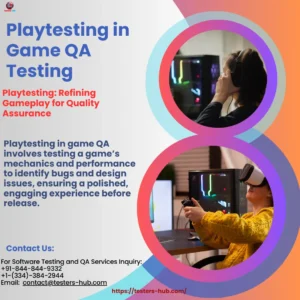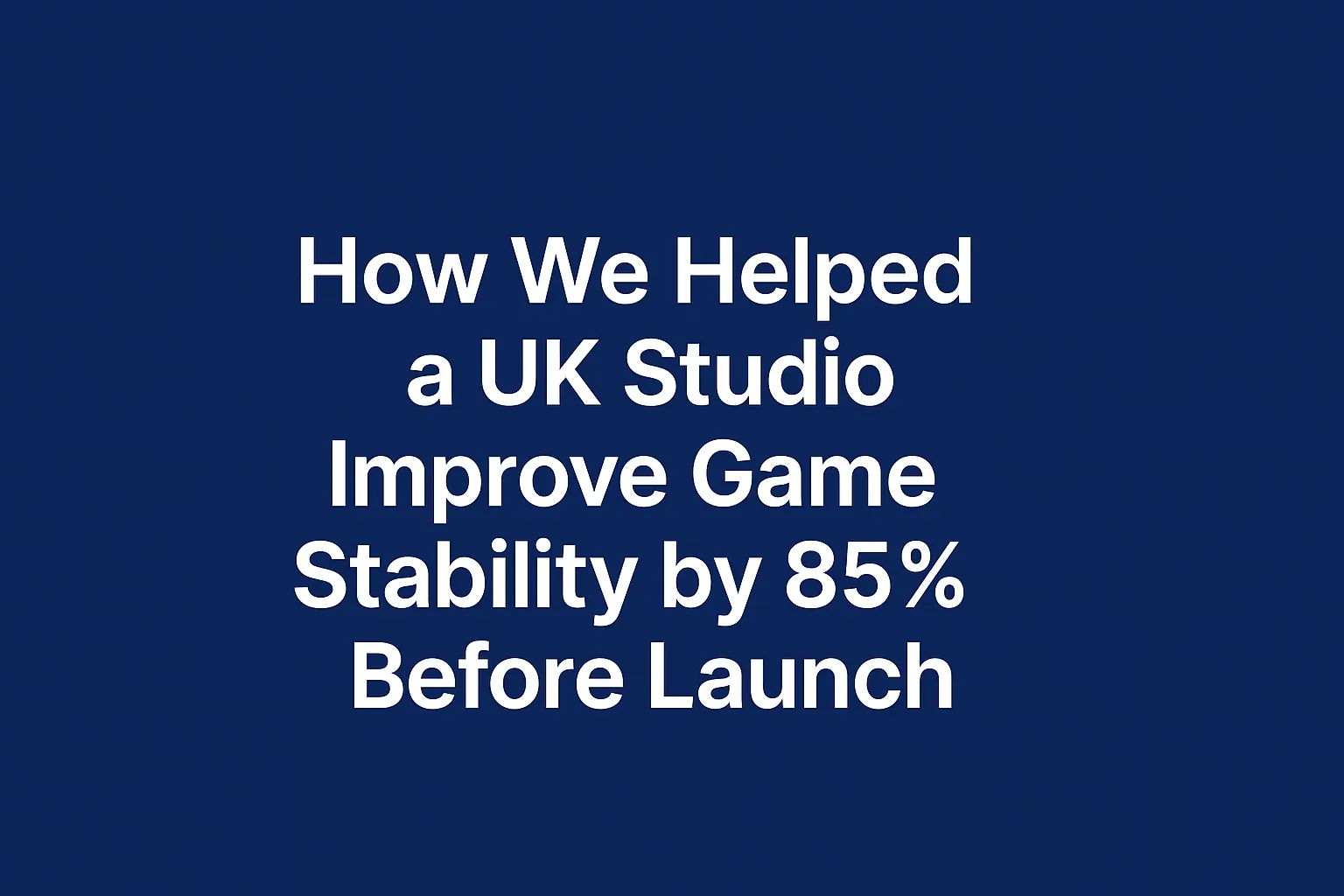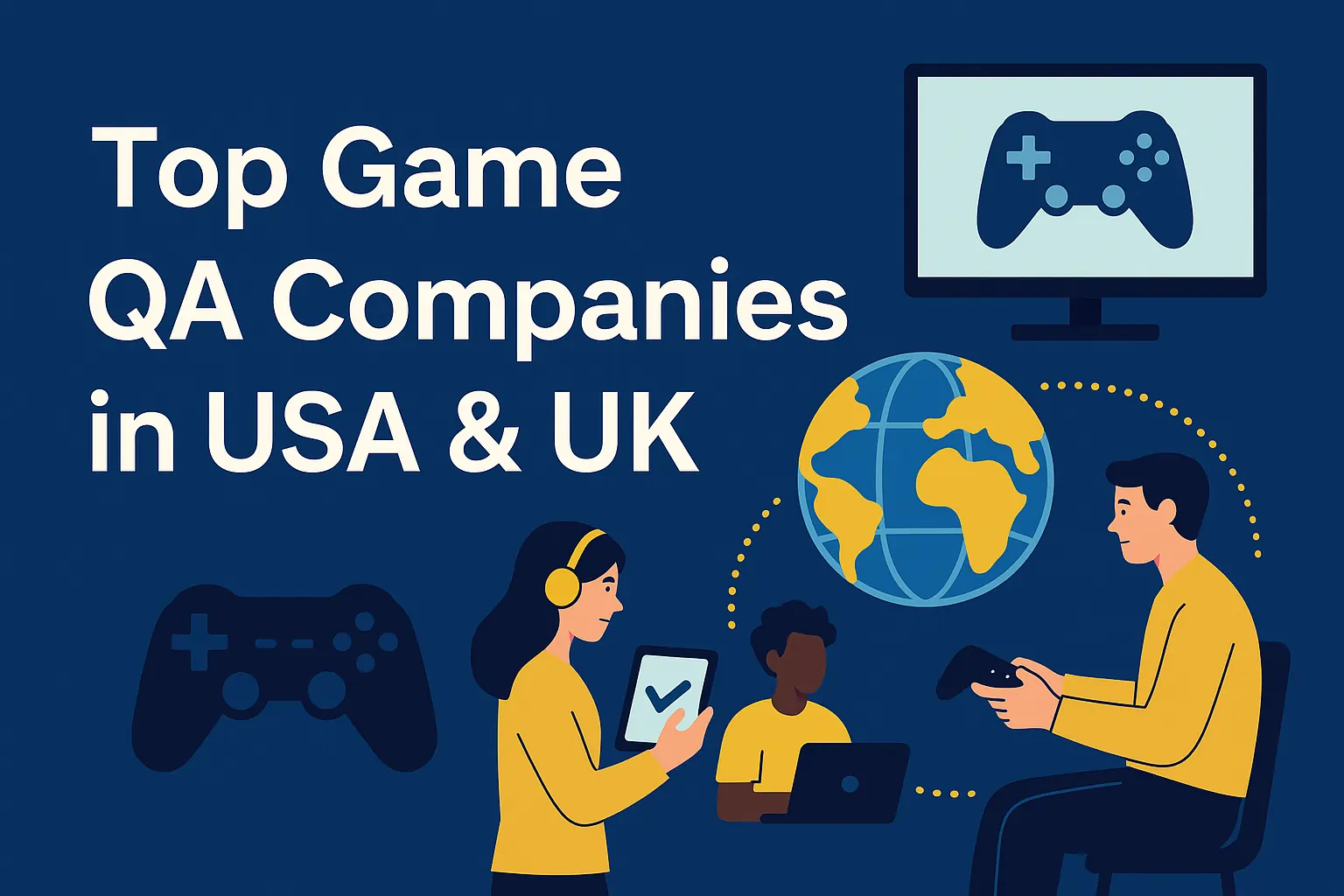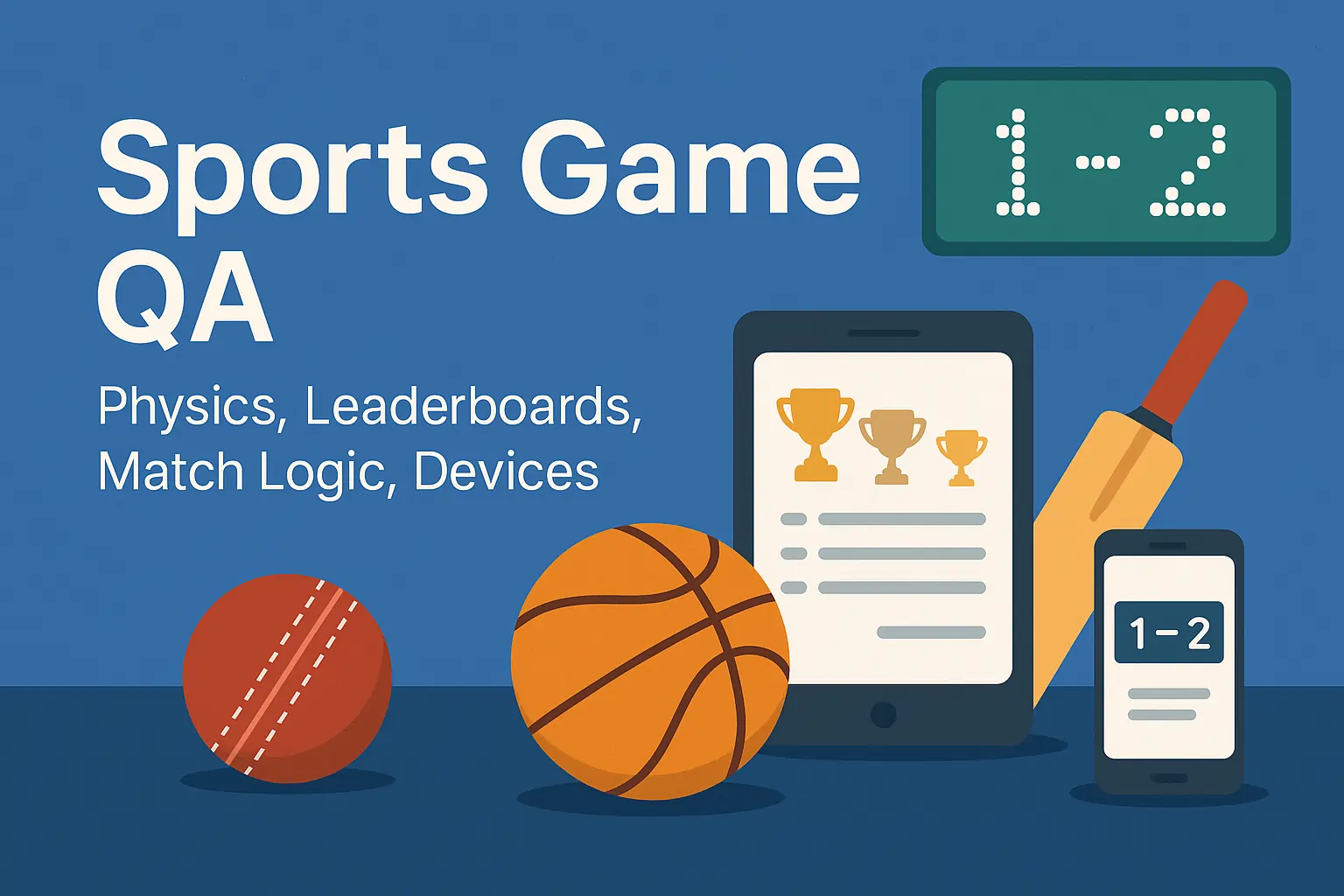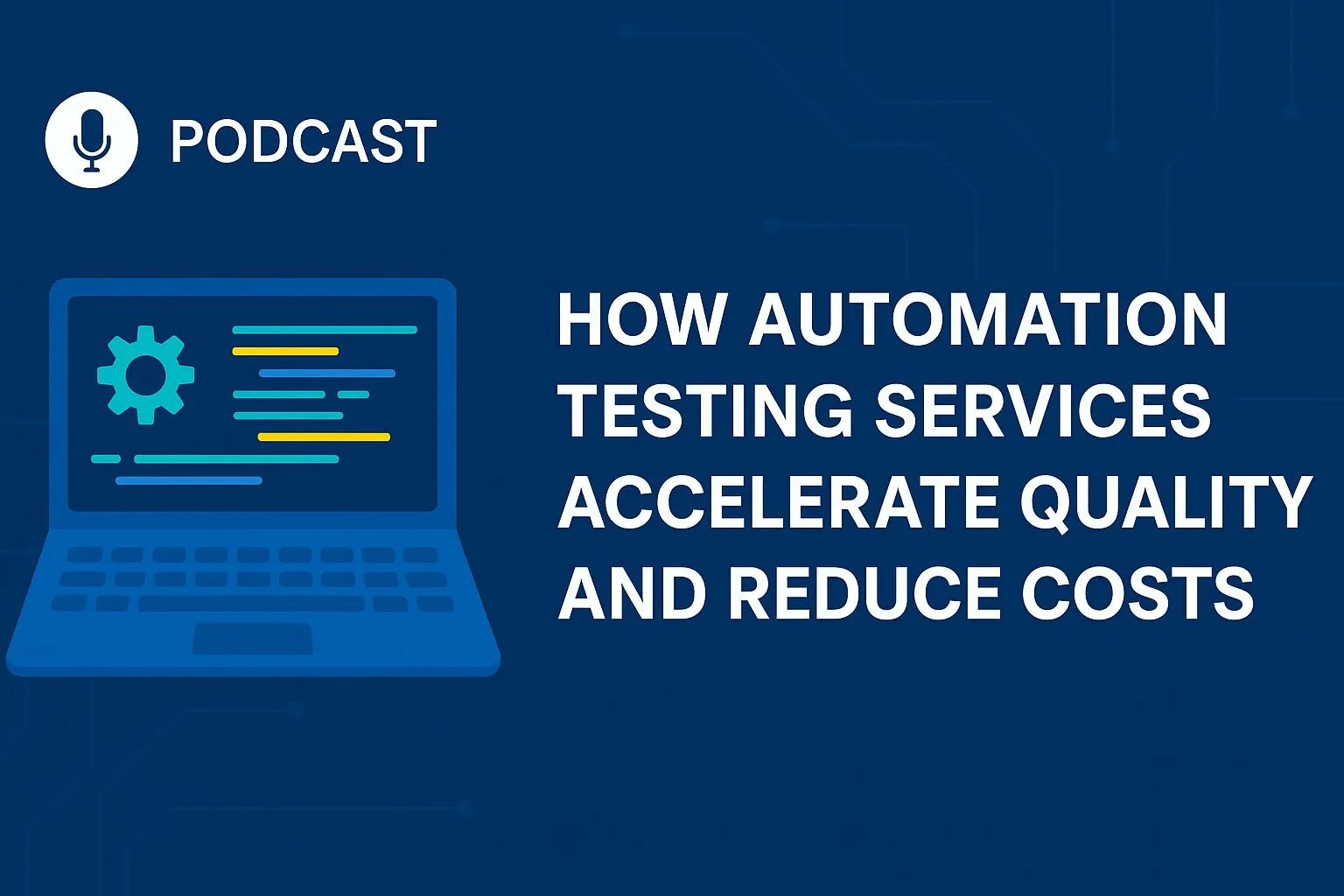Exploring the Importance of Playtesting in Game QA Testing
The gaming industry thrives on creativity, innovation, and technical excellence. In this competitive landscape, the ability to deliver a flawless gaming experience can make or break a game’s success. At the heart of this endeavor lies game QA testing, a meticulous process that ensures every element of a game works as intended. One crucial aspect of QA testing is playtesting, which allows developers to evaluate the game through the eyes of the player.
This blog explores the pivotal role of playtesting in game QA testing services, explaining how it helps developers create games that are engaging, bug-free, and optimized for all platforms. We’ll examine its benefits, technical aspects, and how it impacts the business side of game development.
What is Playtesting in Game QA Testing?
Playtesting is a process where developers or QA testers interact with a game to evaluate its mechanics, identify issues, and gather feedback. Unlike other forms of testing, playtesting focuses heavily on the player’s experience and behavior. It’s an essential part of game QA testing services, helping developers bridge the gap between their vision and the expectations of the gaming community.
In playtesting, QA teams focus on the following areas:
- Gameplay Mechanics: Ensuring that game controls, levels, and interactions are smooth and intuitive.
- User Experience (UX): Evaluating how players navigate menus, interact with in-game elements, and perceive the overall flow.
- Technical Performance: Checking for bugs, crashes, and performance stability across different devices.
Through structured sessions, game QA testing companies can gather valuable insights into how players experience their games in real-world scenarios.
The Key Benefits of Playtesting in Game QA Testing
Playtesting isn’t just a technical process; it’s a critical creative tool. Below are the key benefits of playtesting and how it enhances the QA process:
1. Identifying Gameplay Flaws Early
One of the primary goals of playtesting is to uncover flaws before the game is released. Issues like inconsistent mechanics, unclear objectives, or unbalanced difficulty can frustrate players and result in negative reviews.
By incorporating playtesting into the development cycle, game QA testing services allow developers to identify and address these issues early, saving time and resources later.
2. Ensuring a Smooth User Experience
The player’s experience is at the heart of any successful game. Through playtesting, developers gain insights into how users navigate the game, interact with features, and respond to challenges.
Game QA testing companies evaluate UX elements like:
- Menu and HUD design.
- The intuitiveness of controls.
- The overall pacing of the game.
A smooth user experience keeps players engaged and enhances their overall satisfaction.
3. Evaluating Real-World Player Behavior
No matter how thoroughly developers plan a game, real-world players often interact with it in unexpected ways. Playtesting helps identify these patterns, enabling QA teams to refine mechanics and eliminate unintended exploits.
For example, in an RPG, players might discover ways to farm resources or bypass challenges that developers hadn’t anticipated. By observing these behaviors, QA testing teams can implement fixes that maintain the game’s balance.
The Role of Playtesting in Technical Game QA Testing
While playtesting is primarily associated with evaluating gameplay and user experience, it is equally crucial in addressing a game’s technical foundation. This aspect ensures the game performs seamlessly under various conditions and on different platforms.
1. Stress Testing to Ensure Performance Stability
Modern games are expected to deliver reliable performance across diverse scenarios. Playtesting provides game QA testing services with the opportunity to push a game to its limits, uncovering performance weaknesses. Scenarios tested include:
- Handling heavy multiplayer traffic to ensure stable connections and gameplay during peak usage.
- Managing high graphical demands during visually intensive sequences like battles or cinematic cutscenes.
- Testing extended gameplay sessions, ensuring the game does not overconsume memory or lead to crashes over time.
Through this rigorous process, developers can address performance bottlenecks, ensuring smooth and consistent gameplay for all users, regardless of how they interact with the game.
2. Verifying Cross-Platform Compatibility
With most games launching across multiple platforms—ranging from PCs and consoles to mobile devices—it’s essential to maintain uniform quality across all of them. Playtesting enables game QA testing companies to confirm that a game performs optimally on various hardware configurations and screen resolutions.
Key areas of focus include:
- Ensuring consistent performance regardless of device specifications.
- Validating display settings and visual fidelity, such as proper scaling and resolution adjustments for different screen sizes.
- Testing input devices, including controllers, keyboards, touchscreens, and peripherals, to guarantee full functionality.
By ensuring cross-platform compatibility, developers can reach a broader audience, enhancing both the game’s accessibility and its potential for commercial success.
Polishing Gameplay Through Playtesting
1. Balancing Game Mechanics and Difficulty
Players expect a game to challenge them without becoming overly frustrating. Balancing mechanics like combat difficulty, resource distribution, and progression pacing is crucial to achieving this.
During playtesting, game QA testing services analyze metrics such as:
- How long it takes players to complete levels.
- The frequency of deaths or retries.
- Whether in-game rewards feel earned and satisfying.
By fine-tuning these elements, QA teams help developers create games that are challenging yet fair, catering to a diverse player base.
2. Identifying and Fixing Critical Bugs
Technical bugs can ruin even the most compelling games. Playtesting is instrumental in identifying issues that standard QA testing might overlook, such as:
- Collision detection errors.
- AI behavior glitches.
- Save data corruption.
Game QA testing companies ensure that these bugs are resolved before release, preserving the game’s reputation and minimizing post-launch disruptions.
Enhancing Immersion Through Game QA Testing
Immersion is a key factor in crafting unforgettable gaming experiences. Players should feel deeply connected to the game world, and playtesting is vital in achieving this goal. Through playtesting, developers ensure that both the audio-visual design and accessibility features work together to create an engaging and inclusive experience.
1. Evaluating Audio-Visual Elements for Immersion
Audio and visual components are essential in drawing players into a game’s universe. Playtesting allows game QA testing services to assess the harmony between these elements, ensuring they support the game’s narrative and style.
Specific areas of focus include:
- Audio-visual synchronization, ensuring sound effects and animations match seamlessly.
- Consistency in graphical quality, so visuals remain polished across different environments and scenes.
- Impact of ambient soundscapes, which add depth and atmosphere to the game world.
This meticulous evaluation ensures that the game delivers a cohesive sensory experience that captivates players from start to finish.
2. Promoting Accessibility and Inclusivity
Modern games must cater to a wide audience, including players with diverse abilities and preferences. Playtesting helps developers fine-tune accessibility features, ensuring the game is welcoming to everyone.
Key accessibility elements tested during playtesting include:
- Customizable difficulty options, making the game approachable for both novice and experienced players.
- Readable subtitles and scalable text, ensuring on-screen information is accessible to those with visual impairments.
- Colorblind-friendly interfaces and modes, addressing common visual challenges.
By prioritizing accessibility, game QA testing companies enable developers to create inclusive experiences that resonate with a broader and more diverse player base.
Playtesting in Multiplayer and Online Gaming.
Guaranteeing Optimal Multiplayer Gameplay
Online multiplayer games are a major segment of the gaming industry, and their success depends on flawless performance. Playtesting is crucial in identifying issues and refining game systems to ensure a smooth and engaging player experience.
During multiplayer playtesting, the following factors are thoroughly evaluated:
- Matchmaking functionality, making sure players are accurately paired based on skill level or other relevant criteria.
- Reliable communication systems, such as voice and chat, are tested to ensure they are stable and easy to use without interruptions.
- Gameplay synchronization, confirming that all players experience smooth and consistent game interactions, especially during intense or fast-paced moments.
In addition, game QA testing services also stress-test servers under high load conditions, ensuring that they can handle peak demand without crashing or lagging. Competitive features like rankings and in-game mechanics are scrutinized for fairness and balance, ensuring no player gains an unfair advantage.
The Business Impact of Thorough Playtesting
Beyond gameplay and technical performance, playtesting has a significant impact on the business side of game development.
Reducing Post-Launch Risks and Costs
A buggy or poorly optimized game can damage a studio’s reputation and result in costly post-launch fixes. Thorough playtesting during development helps mitigate these risks by addressing issues proactively.
This not only saves time and money but also ensures that the game delivers a positive first impression, which is crucial for sales and player retention.
Conclusion
Playtesting is a vital component of game QA testing services, ensuring that games meet the highest standards of quality, performance, and player satisfaction. By identifying gameplay flaws, balancing mechanics, and addressing technical issues, game QA testing companies help developers create products that resonate with players and stand out in a competitive market.
Whether you’re an indie developer or a AAA studio, investing in comprehensive playtesting is essential to crafting games that players love and remember.


